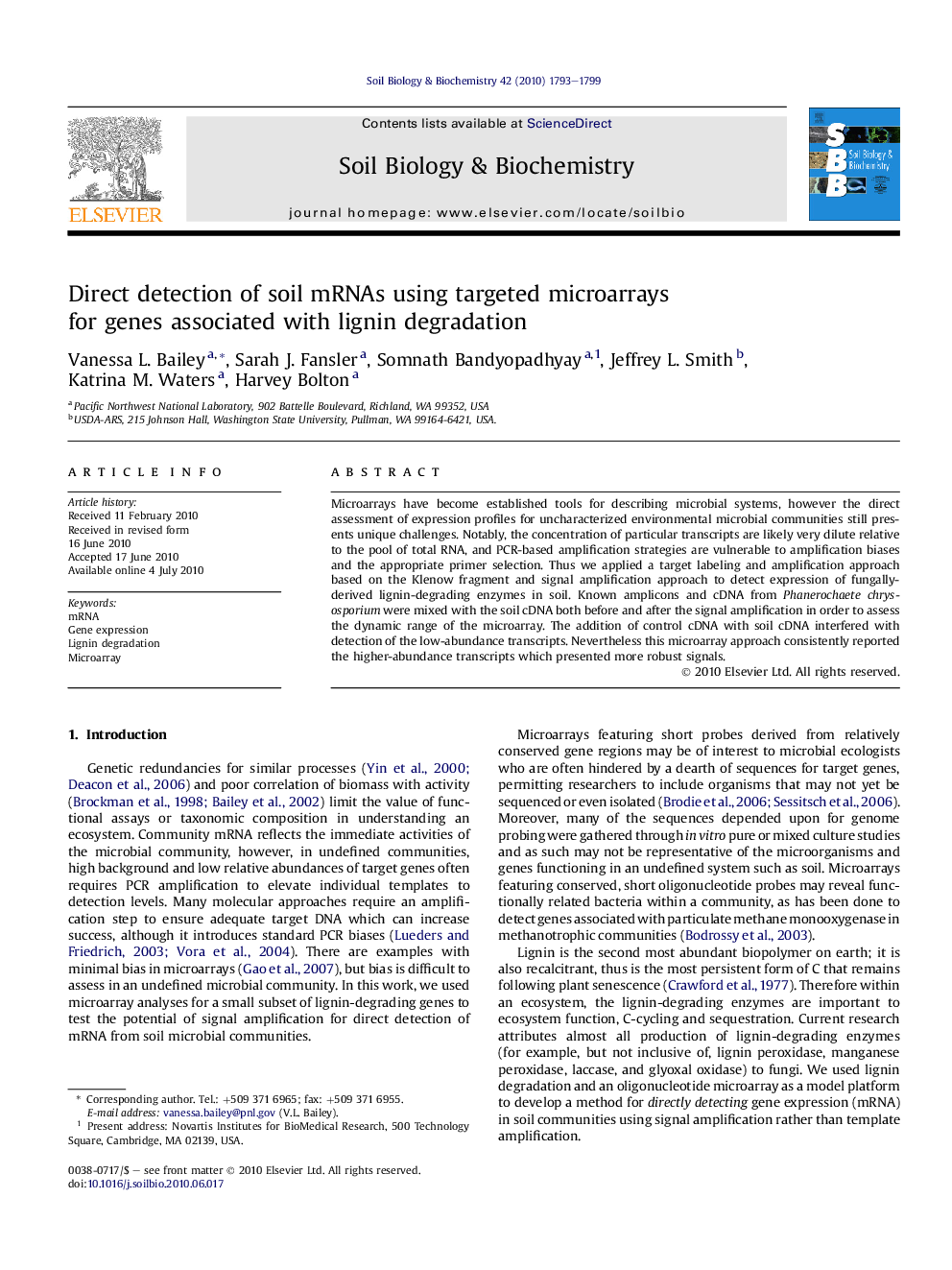| Article ID | Journal | Published Year | Pages | File Type |
|---|---|---|---|---|
| 2025415 | Soil Biology and Biochemistry | 2010 | 7 Pages |
Microarrays have become established tools for describing microbial systems, however the direct assessment of expression profiles for uncharacterized environmental microbial communities still presents unique challenges. Notably, the concentration of particular transcripts are likely very dilute relative to the pool of total RNA, and PCR-based amplification strategies are vulnerable to amplification biases and the appropriate primer selection. Thus we applied a target labeling and amplification approach based on the Klenow fragment and signal amplification approach to detect expression of fungally-derived lignin-degrading enzymes in soil. Known amplicons and cDNA from Phanerochaete chrysosporium were mixed with the soil cDNA both before and after the signal amplification in order to assess the dynamic range of the microarray. The addition of control cDNA with soil cDNA interfered with detection of the low-abundance transcripts. Nevertheless this microarray approach consistently reported the higher-abundance transcripts which presented more robust signals.
